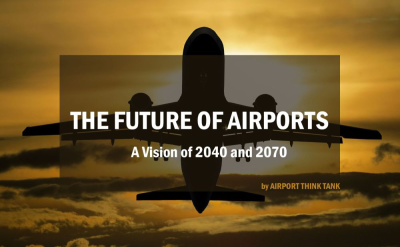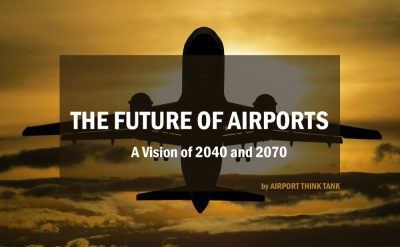
The Future of Airports: Security Threats and Unlawful Activities of the Future (Topic No. 4)
The Airport Think Tank of ENAC Alumni published last month the global analysis of The Future of Airports. Each week, discover a new focus on one of the 11 topics of this research initiative.
In 2017, then U.S. TSA Administrator Peter V. Nuffenger declared that “there is a spectacular nature to attacking aviation. First of all, it says something about you as a terrorist group if you are able to get through all the systems designed to prevent damage. But it also has a huge psychological impact and a very large economic impact”. Which was true in 2017 will still be applicable in 2040 and 2070.
The most common patterns have remained unchanged since the years 1970. Bombing the check-in counters or baggage claim and attacks with firearms by armed groups in the public area of passenger terminals have been used on multiple occasions. These modes of action maximize damages, casualties, and media impact while they are difficult to prevent unless these efforts are identified prior to their action via intelligence and police investigation.
Airports shall never again be the access door to aircraft for terror organizations. In the period immediately following 9/11, the most targeted countries by extremist groups and their followers took exceptional measures to prevent aircraft hijacking and bombing. After multiple adjustments, these standards provide today an efficient security net. The number of hijacking from departing countries where they are implemented has plunged, and the aviation community is now better prepared to counter in-flight attempts.
As in aviation safety, the Reason’s model applies in security. Adding layers of different measures and policies reduces the likelihood of an attack to be successful. Because terrorists – unlike safety issues – adapt to countermeasures and innovate as well, these security layers shall be versatile and flexible. While they are already not the same from a region to another depending on local activities and global targeting of terrorists, they might not use the same layers from airport to airport in the future – depending on the reality of the threat. This risk-based approach is now promoted by ICAO through the GASeP.
State-sponsored cyberterrorism is a growing threat too. Over the past decade, mass cyberattacks with a strong suspicion of State-sponsorship have skyrocketed. Dictators and rogue factions could go further and try to attempt to destroy the integrity of air transportation. Moreover, viruses targeting specific information system infrastructure could get out of control and contaminate critical networks and systems (e.g. Stuxnet, 2010).
Active shooters and suicidal individuals rejecting our society might be a major threat of the future – not only for aviation. Contemporary urban societies that aim at connecting many have created deep isolation of some. Mental illness is growing by the number and can be exacerbated in countries and “cultures” of tight social control with a lack of solidarity. This pandemic is not yet fully recognized by governments and is susceptible to creating new Unabombers and active shooters.
















No comment
Log in to post comment. Log in.